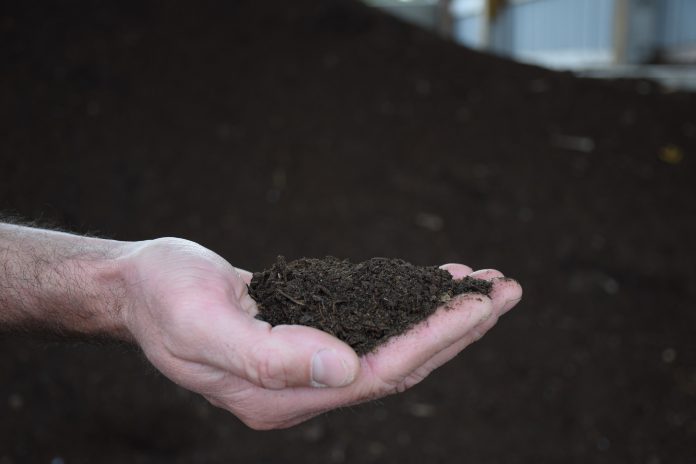
Spring has finally sprung and livestock is finally in the pasture. Spring turn out may be a little late this year but with some sunshine, the grass should have really started growing throughout the month of May.
As livestock are leaving the barn or the heavy use pad this time of year, a lot of producers are left with some management questions from the manure that is left behind in these areas.
If you haven’t considered composting manure in the past this process may be easier than you think and could benefit your farm operation in more ways than one.
Benefits
Livestock manure can be spread right away after livestock leave an area, however, the volume of manure might exceed what a producer is able to handle and spread at one time.
Composting manure reduces the volume and produces a lighter, easier to handle, product. This product can be stored until the producer is ready to use or sell the product at a later date.
The available fertilizer nutrients in compost are released at a slower rate than those available in raw manure which could increase the value of the product.
Location
One thing that is very important to remember when composting manure is that producers need to consider the location of where the manure will be composted.
An indoor area is preferred but an outdoor location is still ideal with special considerations. Composting under a roof or a tarp can ensure that the manure will be protected from the weather and that nutrients will be not moved through runoff.
A three-sided bin, such as a fertilizer or feed bay, is a good indoor option because a loader can easily turn the pile against the walls. Piles can also be stored between round bales with a tarp over the pile for protection.
For outdoor composting, long piles placed in windrows can be utilized. The piles should be located on a surface with firm ground so the pile can be turned.
Drainage from the pile is an important consideration as well. Do not place the pile near a water source and consider planting a grass filter strip near the area so any runoff can be diverted to this area.
Composting process
Composting is a fairly simple process that takes inputs such as air, moisture, and manure, and breaks the material down with bacteria.
To create the bacteria, heat in the pile needs to reach between 145 and 160 degrees, according to the Natural Resources Conservation Service.
This process needs to cover all of the manure in the pile which where the turning process comes into effect.
Once the inside of the pile heats up for at least three days, the pile needs to turned to give the manure on the outside a chance to go through the composting process as well.
Turning the manure several times over a few months will eliminate weed seeds and germs, leaving a product that is dark brown and ready to be spread.
Other considerations
Once the manure becomes dry part way through the composting process, especially when stored indoors, water can be added to increase the moisture.
If the manure contains large material such as bedding, it may take longer to compost. It is best to chop large material before adding them to the pile.
Adding air to the middle of the piles through pipes can also cut down on the composting time.
Conclusion
Composted manure can solve a variety of problems for livestock producers such as manure storage, limited spreadable acres, and weed seeds in the manure.
The finished product should be tested for fertilizer value to use along with soil samples to ensure you are getting the most of your product. This simple explanation of composting manure should be used to help producers consider if this is an option for their operation.
If you are considering composting manure and would like more information, visit or call your local Soil and Water Conservation District or Natural Resources Conservation Service office for technical assistance.












